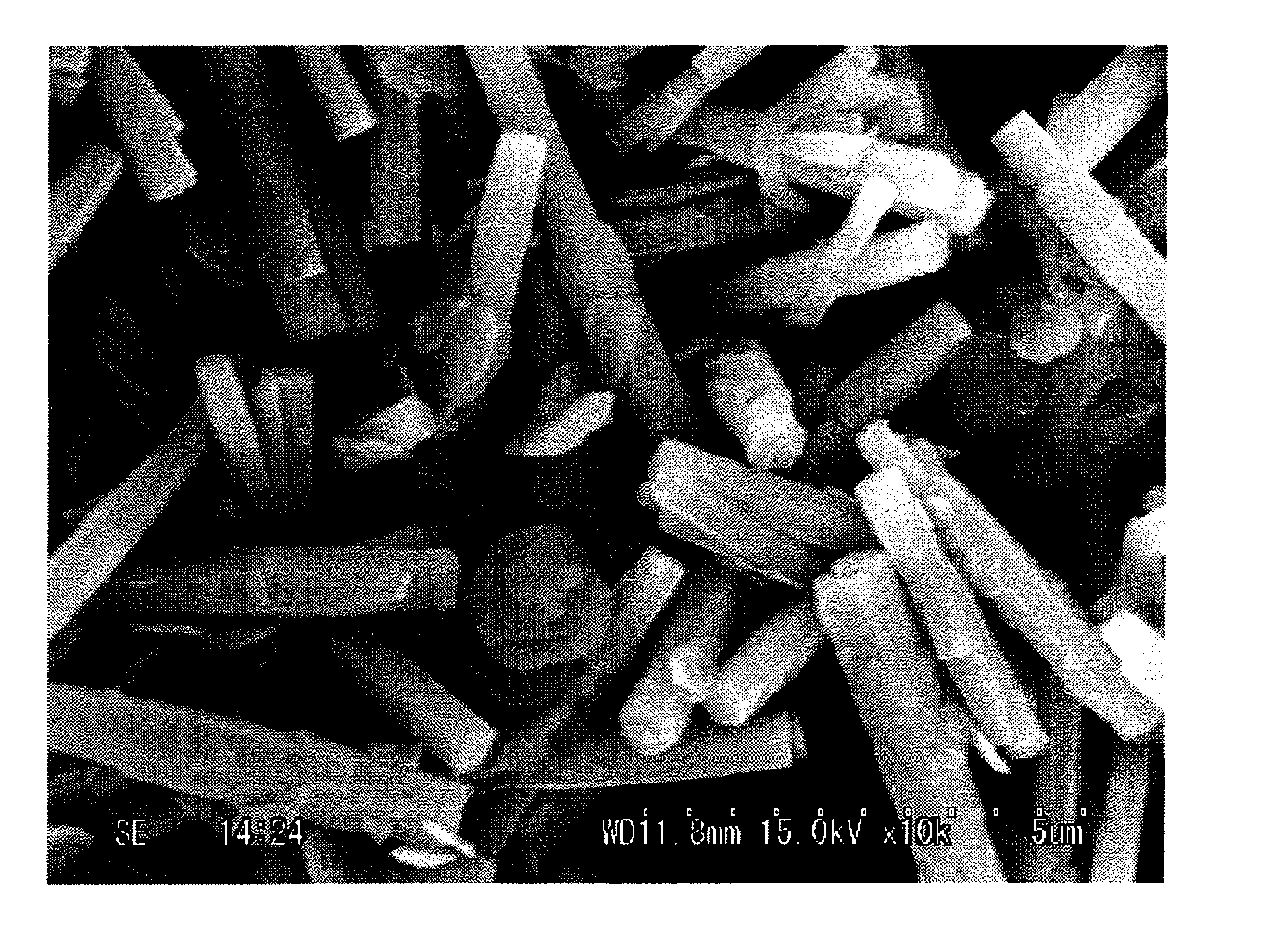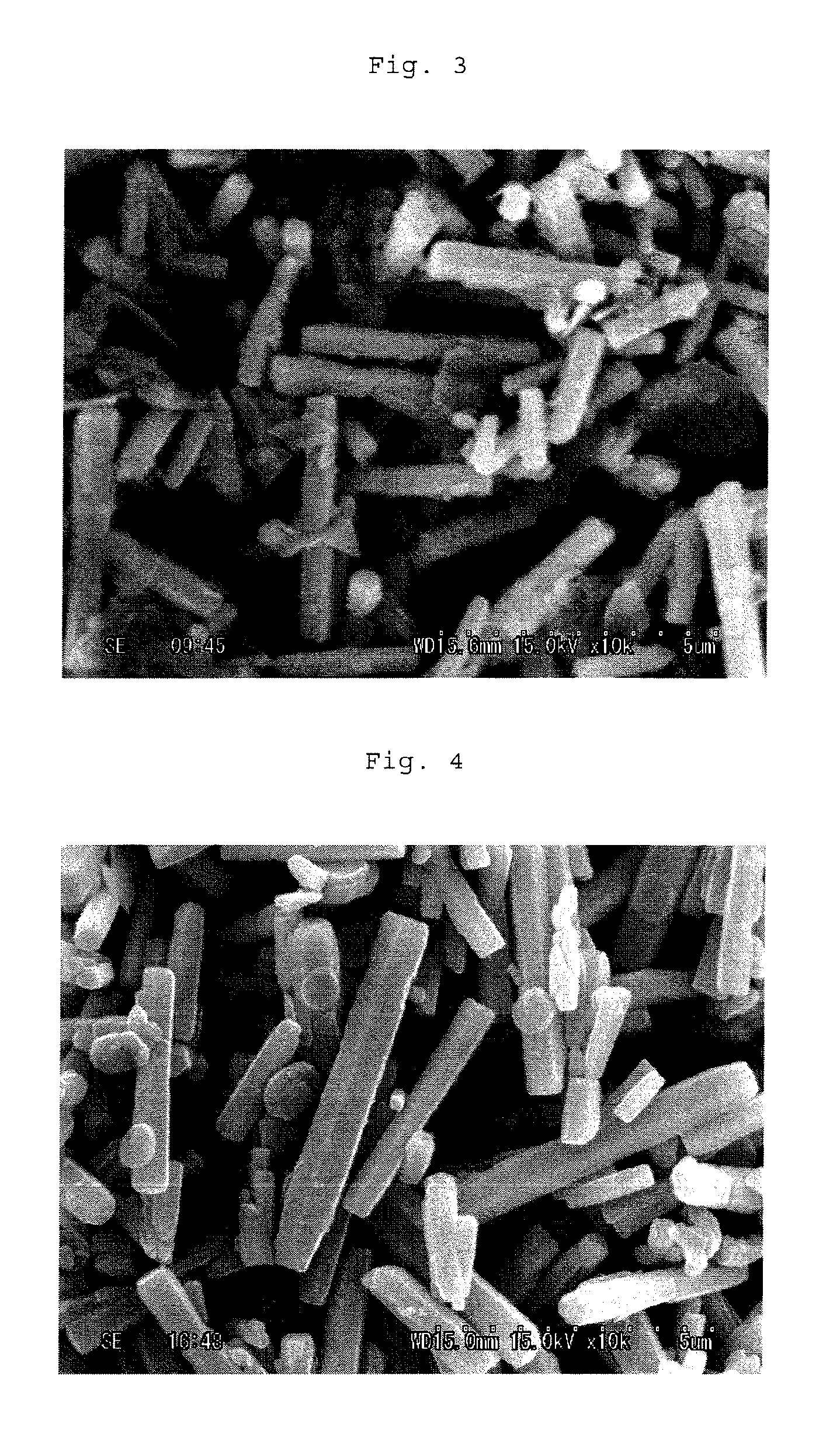Columnar zinc oxide particles and process for producing the same
a technology of zinc oxide particles and copper oxide particles, which is applied in the field of copper oxide particles, can solve the problems of easy breakage, needle-shaped and thin zinc oxide particles, and limited use of expensive electrical conductivity improving agents, and achieve excellent and sufficient thermal conductivity or electrical conductivity.
- Summary
- Abstract
- Description
- Claims
- Application Information
AI Technical Summary
Benefits of technology
Problems solved by technology
Method used
Image
Examples
example 1
Synthesis of Columnar Zinc Oxide Particles
synthesis example 1
Reaction
[0114]To a zinc chloride aqueous solution-aluminum sulfate aqueous solution mixture liquid having a zinc chloride concentration of 1.011 mol / L and an aluminum sulfate concentration of 0.00505 mol / L was added sodium hydroxide in an amount of an alkali equivalent weight of 1.2, i.e., 1.2 mol of sodium hydroxide per mole of zinc chloride with stirring, and the resultant mixture react with at 25° C. for 30 minutes. A reaction slurry had a pH of 5.91.
(Washing)
[0115]The thus-obtained reaction slurry was washed with water.
(Hydrothermal Treatment)
[0116]The washed slurry was re-suspended in deionized water and hydrothermally treated at 120° C. for 15 hours.
(Drying)
[0117]The thus-obtained product was dehydrated, cleaned and dried to give particles. As a result of X-ray diffraction, it was found that the obtained particles were mixture of zinc oxide with a basic zinc hydroxide compound, and according to a SEM photograph, it was found that each particle was a columnar crystal. Table 1 s...
synthesis example 2
[0118]Particles were obtained in the same manner as in Synthesis Example 1 except that the alkali equivalent weight ratio was changed to 1.4, that the aluminum sulfate was replaced with titanium (IV) sulfate and that the hydrothermal treatment conditions were changed to 170° C. and 20 hours. As a result of X-ray diffraction, it was found that the obtained particles were mixture of zinc oxide with a basic zinc hydroxide compound, and according to an SEM photograph, it was found that particle was a columnar crystal. Table 1 shows properties of the particles.
PUM
| Property | Measurement | Unit |
|---|---|---|
| Temperature | aaaaa | aaaaa |
| Fraction | aaaaa | aaaaa |
| Percent by mass | aaaaa | aaaaa |
Abstract
- wherein Mn+ is a trivalent or tetravalent metal, x and “a” satisfy 0.002<x<0.05 and 0.05≦a<0.5, respectively, and having a columnar particle content of 80% or more.
Description
Claims
Application Information
 Login to View More
Login to View More - R&D
- Intellectual Property
- Life Sciences
- Materials
- Tech Scout
- Unparalleled Data Quality
- Higher Quality Content
- 60% Fewer Hallucinations
Browse by: Latest US Patents, China's latest patents, Technical Efficacy Thesaurus, Application Domain, Technology Topic, Popular Technical Reports.
© 2025 PatSnap. All rights reserved.Legal|Privacy policy|Modern Slavery Act Transparency Statement|Sitemap|About US| Contact US: help@patsnap.com



